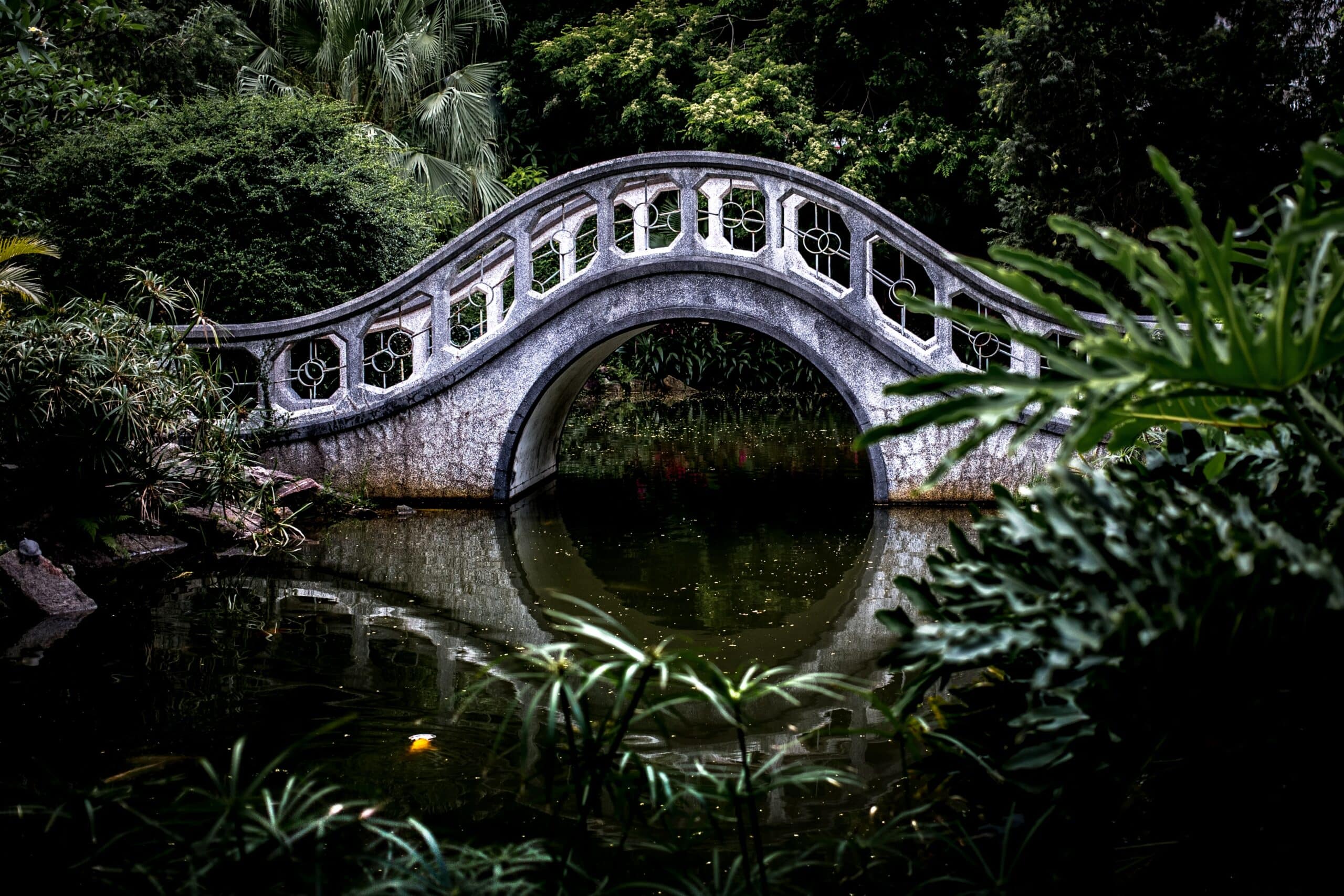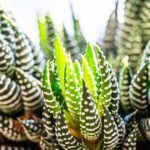Are you looking for a unique and beautiful plant to add to your home that is easy to care for? Are you an avid gardener who wants to try something new? Look no further than the goldfish plant, also known as Columnea Gloriosa! This vibrant and colorful houseplant is the perfect addition to any home, providing beauty and elegance with minimal effort.
The goldfish plant is an easy-to-care-for, low-maintenance houseplant that adds a pop of color and intrigue to any room. With its stunning red blooms, thick foliage, and impressive growth pattern, it’s sure to be the center of attention in any space. Not only will it bring life into your home or office but also it’ll help purify the air as well!
This article will provide a comprehensive guide on how to care for this amazing houseplant. Learn all about what type of soil it needs, how much light and water it needs on a daily basis, and more! With this guide, you’ll be able to keep your goldfish plant thriving for years.
What Is A Goldfish Plant?
The goldfish plant is a beautiful gift from the natural world, a symbol of life and hope. It’s bright colors and unique shape make it stand out among other houseplants. It’s an ideal choice for those looking to add a touch of whimsy to their home or office.
The goldfish plant or Columnea gloriosa is native to Central America and the Caribbean Islands. The foliage resembles that of a miniature pine tree with its long, pointed leaves and delicate branches. Its blooms are small and come in shades of pink, orange, yellow, white and red. These flowers can be found throughout the year if kept in optimal conditions.
Growing a goldfish plant indoors requires well-drained soil with plenty of organic matter, bright indirect light and moderate temperatures between 60°F-85°F (16°C-29°C). Care should also be taken to keep the soil evenly moist but not soggy as this can lead to root rot. With proper care, this colorful houseplant will bring joy for many years to come!
Where Does A Goldfish Plant Grow?
The goldfish plant is like a hidden gem tucked away in the exotic lands of South America. It’s a rare beauty that captivates the soul, just waiting to be discovered. But where does this beautiful plant actually grow?
It’s native to South American rainforests and grows best in humid environments with plenty of indirect sunlight. The ideal location for a goldfish plant is near an east-facing window; however, it can also be grown under lights or outdoors in warm climates. These plants prefer temperatures between 55°F and 80°F, so make sure to keep it away from drafty windows or cold air vents.
The goldfish plant thrives when provided with bright, indirect light and regular watering—as long as you avoid over-watering it. With the right care, this tropical beauty can add a unique flair to any home or office space. Now that we know where it grows best, let’s examine what temperature requirements are necessary for optimal growth and development.
Temperature Requirements For A Goldfish Plant
Have you ever wondered what temperature is best for a goldfish plant? It’s an important consideration when growing this vibrant and colorful houseplant. To keep your columnea gloriosa (goldfish plant) healthy and thriving, it’s essential to maintain the ideal temperature range for its care.
First, let’s look at the optimal temperature range for a goldfish plant. The ideal temperatures are between 65-80°F (18-27°C). Keeping the plant at temperatures outside of that range can lead to issues with growth and health. In warmer climates or during summer months, be sure to keep in mind that temperatures inside your home may get too hot for your goldfish plant.
If the temperature is too cold, you may notice foliage discoloration or loss of some leaves on the plant due to frost injury or shock. It’s important to avoid drastic changes in temperature as much as possible or move the goldfish plant away from windowsills, radiators, air conditioners, and fans – all of which can cause temperature fluctuations.
So, when caring for a goldfish plant make sure to monitor the temperature levels carefully and adjust as needed. By providing your columnea gloriosa with a comfortable environment within its ideal temperature range you’ll be taking an important step towards helping it thrive!
Soil Requirements For A Goldfish Plant
When it comes to soil requirements, Goldfish plants are known for their adaptability. This tropical species is incredibly resilient and can thrive in a variety of soils with the right amount of moisture. According to research, Goldfish plants can survive in temperatures between 45-85°F and need soil that’s consistently moist but not soggy.
To provide the best growing environment for your plant, the ideal soil type should be fast-draining and well aerated. A blend of equal parts peat moss, perlite, and potting mix is a great choice as it will retain moisture but still drain quickly and provide adequate oxygen to the roots. Additionally, adding some organic matter such as compost or manure will help nourish the plant throughout its growth cycle.
The most important thing to remember when caring for a Goldfish plant is to make sure the soil never gets too dry or too wet. If you notice that your plant’s leaves begin to yellow or wilt, this could be an indication that it needs more water. On the other hand, if you see spots on the leaves or root rot, this could mean you’re overwatering it. With proper care and attention, your Goldfish plant should remain healthy and vibrant year-round!
Now that we’ve gone over soil requirements for a Goldfish plant, let’s look at how best to water them so they can thrive indoors.
How To Water A Goldfish Plant
Taking care of a goldfish plant and watching it bloom is an activity that can bring a lot of joy. From the vibrant colors to its lush foliage, this plant truly adds beauty to any room. But if you’re wondering how to water your goldfish plant, you’ve come to the right place!
Watering your goldfish plant doesn’t have to be difficult. It’s important not to drench the soil but rather provide enough moisture for the roots. Water your goldfish plant when the top inch or two of soil is dry and make sure not to let the pot sit in water or overly moist soil – this will cause root rot. You don’t need a special type of water; tap water at room temperature will do just fine.
If you are unsure whether your goldfish plant needs watering, stick your finger in the soil – if it feels damp, it doesn’t need more yet! When watering, try using a watering can with a narrow spout so that you can ensure that each area gets enough moisture without over-watering. TIP: To get an idea of how much water your goldfish plant needs, monitor how quickly the topsoil dries out and adjust accordingly.
How To Fertilize A Goldfish Plant
Fertilizing your goldfish plant is essential for ensuring its healthy growth. This special houseplant needs a balanced fertilizer to ensure that it gets the nutrients and minerals it needs to thrive. Luckily, fertilizing your goldfish plant is easy and doesn’t take much time at all!
The first step in fertilizing your goldfish plant is to select the right balance of nutrients. Look for a fertilizer specially formulated for houseplants, such as one with an NPK ratio of 10-10-10 or 20-20-20. Once you’ve chosen the right product, mix it according to the instructions given on the packaging.
Then, begin fertilizing your goldfish plant regularly. During the spring and summer months when it’s actively growing, feed it once every two weeks with a diluted solution of fertilizer at half strength. Reduce feeding frequency during winter when it’s not actively growing to once a month or every six weeks. That way you can ensure that your goldfish plant will get all the nutrition it needs without risk of overfertilization.
By following these simple steps and keeping an eye on your plant’s health, you can ensure that your beloved goldfish plant stays happy and healthy for years to come! Now that you know how to fertilize a goldfish plant, let’s look at how to propagate them from cuttings so they can give you even more joy in your home.
How To Propagate A Goldfish Plant
Propagating a goldfish plant is an easy and rewarding way to increase your collection. It’s an essential part of caring for this vibrant houseplant, so let’s take a look at how it’s done.
The best method for propagating goldfish plants is through stem cuttings. Start by cutting the stems with sharp scissors or pruners, making sure each portion has at least two sets of leaves. Place the cuttings into a pot filled with moist soil, and lightly press down on them to ensure they stand upright. Keep the soil in the pot damp but not soggy, and place it in a warm spot with bright indirect light.
Roots should begin to form within four weeks, although it may take up to eight weeks for them to establish firmly in the soil. You can tell when your plants have taken root when you gently tug on them and feel resistance from the soil. With regular care and attention, these new plants will soon be large enough to repot independently!
How To Prune A Goldfish Plant
Pruning a goldfish plant is like sculpting a masterpiece; it takes patience, precision, and practice. With the right technique, you can keep this tropical climbing beauty in shape while avoiding common pitfalls. Let’s explore the art of pruning and how to unlock your inner green thumb when caring for a goldfish plant.
First off, timing is everything when it comes to pruning a goldfish plant. The best time to cut back your plant is during its natural dormant period which usually occurs in late winter or early spring. Aim for removing no more than one-third of the foliage at once so that you don’t put too much stress on the plant. Additionally, make sure that you use sharp scissors or garden shears to prevent any damage from jagged edges.
When it comes to shaping your goldfish plant, start by removing any dead foliage or stems and then focus on thinning out areas that have become overgrown with branches and leaves. You can also pinch off new shoots if they are not growing in the desired direction as this will encourage bushiness and promote better air circulation throughout the plant. Lastly, don’t forget to fertilize after pruning so that your hard work pays off!
With these tips in mind, you’re now ready to tackle one of the most rewarding aspects of caring for a goldfish plant – pruning! Adopting this self-care routine will ensure that your beloved climber continues to thrive season after season. Now let’s take a look at some potential pests and diseases that may affect your plant’s health…
Common Pests And Diseases Of A Goldfish Plant
Ironically, the delicate beauty of the goldfish plant can be quite vulnerable to pests and diseases. Though its graceful foliage and bright flowers make it a great addition to any home, without proper care, this fragile species can succumb to various issues.
Fungal diseases like powdery mildew and Alternaria leaf spot can be common problems for goldfish plants grown indoors. These infections are often caused by overwatering or poor air circulation. Pests such as aphids, whiteflies and mealybugs are also frequent visitors that may appear on the foliage of these plants.
Though caring for a goldfish plant can be challenging at times, understanding how to properly treat these issues is key in keeping your plant healthy. With the right knowledge and dedication, you’ll soon have your goldfish plant looking its best!
How To Treat Pests And Diseases Of A Goldfish Plant
As if we didn’t have enough to worry about, sometimes even our beloved houseplants can suffer from pests and diseases. But fear not – with a little knowledge and some TLC, we can effectively treat any issues that arise in our goldfish plants. Here’s a handy guide on how to do just that.
Firstly, let’s look at the symptoms of common diseases and pests. Try to spot any discoloration on the leaves, weak or wilting stems, or tiny holes in the foliage as these could be signs of infection or damage from insects. Next, check for any evidence of infestation – this could be anything from webbing on the leaves to actual bugs crawling around your plant!
Now it’s time to take action. Here are four tips for tackling any problems you may find:
- Remove affected parts of your plant using scissors or pruning shears – this reduces the risk of disease spreading and helps keep your plant healthy;
- If you spot any bugs, pick them off by hand and dispose of them;
- Give your goldfish plant a gentle shower with water to rinse away dirt and debris;
- Treat with an insecticidal soap to kill off any remaining pests or use a fungicide if you suspect your plant is suffering from a fungal infection.
By following these simple steps you can help ensure your goldfish plant stays happy and healthy for years to come – no green thumb required! Now all that’s left is learning how best to care for it indoors...
Tips For Growing A Goldfish Plant Indoors
Have you ever wondered why people choose to grow goldfish plants indoors? Is there a benefit to this practice? The answer is yes! Indoor growing of goldfish plants provides numerous advantages over planting them outdoors. Let’s explore the tips for successful indoor growing of a goldfish plant and the benefits it offers.
First, it’s important to understand that goldfish plants need bright light to thrive, but not direct sunlight. Placing them near a south-facing window or under artificial lighting is optimal if you want your plant to grow healthy and strong. Additionally, you should water your plant regularly – but only when the soil feels dry. This can be determined by sticking your finger into the soil up to your second knuckle; if it feels dry, then it is time to water again.
Finally, make sure you repot your goldfish plant every two years or so in order to support healthy growth. Repotting will also help prevent disease and pest infestations from occurring in your plant’s soil. When repotting, use a potting mix specifically designed for tropical houseplants and don’t forget to add some fertilizer once every month during the growing season. Now let’s look at some of the benefits of growing a goldfish plant indoors.
Benefits Of Growing A Goldfish Plant Indoors
The joy of growing a goldfish plant indoors is like the sensation of a cool breeze on a summer’s day – refreshing and calming. It brings the outdoors in and can be a beautiful addition to any home. In this section, we’ll explore the benefits of having your own goldfish plant indoors.
For starters, growing your own goldfish plant can help improve air quality in your home by absorbing pollutants such as formaldehyde, ammonia, benzene and xylene from the air. On top of that, it also helps increase humidity levels in your home which can be beneficial for those who suffer from allergies or skin conditions such as eczema.
Not only does having a goldfish plant indoors provide health benefits, but it can also make an attractive decoration in any room. This unique houseplant has wonderfully shaped leaves with colorful veins that will add vibrancy to any space. Plus, it’s incredibly low maintenance so you don’t need to worry about spending hours caring for it each week!
With its beauty and health benefits, having a goldfish plant indoors is definitely worth considering if you’re looking to bring some life into your home. Next up: how best to display this stunning houseplant!
How To Display A Goldfish Plant Indoors
What if you have a stunning goldfish plant, but don’t know how to display it properly? You don’t need to worry – there are plenty of ways to show off your prized possession! Juxtapose this with the challenge of actually growing a goldfish plant, and you have a perfect balance.
When displaying your goldfish plant indoors, it’s important to make sure that it gets enough light. Place your goldfish plant in an area where it can receive bright indirect sunlight for about 4-6 hours each day. If possible, try rotating the pot every few days so that all sides get light exposure.
In addition to light, you’ll want to give your goldfish plant lots of humidity. To accomplish this, you can mist the leaves regularly or place a humidifier nearby. Alternatively, you could set up a pebble tray filled with water near the pot. This will help increase the moisture around the plant without getting its leaves wet.
From providing adequate light and humidity levels to repotting when needed, there are several steps necessary for keeping your goldfish plant thriving indoors. With these tips in mind and some creativity in arranging the pot and its surroundings, you’ll be able to create an eye-catching display that will surely impress visitors!
Troubleshooting Growing A Goldfish Plant Indoors
Troubleshooting growing a goldfish plant indoors can be tricky, but it doesn’t have to be. With the right knowledge and care, you can keep your goldfish plant healthy and happy. Let’s take a look at some of the common issues that can arise when caring for this unique houseplant.
One problem you might encounter is not enough light. Goldfish plants need plenty of bright, indirect light to thrive, so make sure they’re getting at least four hours of sunlight each day. If they’re not getting enough light, try moving them to a brighter spot or using a grow light to supplement their exposure.
On the other hand, too much direct sunlight can also be an issue for goldfish plants. This can cause sunburns or dry out the leaves and soil too quickly. To avoid this, make sure your plants are in an area that gets morning sun but is shaded from intense afternoon rays. You should also watch out for signs of stress like wilting or yellowing leaves and adjust accordingly if needed.
By following these tips and troubleshooting any growing issues that come up along the way, you’ll have no problem keeping your goldfish plant healthy and beautiful in its new home indoors. Now that you know how to troubleshoot common problems with growing goldfish plants indoors, let’s take a look at how to care for them properly!
How To Care For A Goldfish Plant Indoors
Caring for a Goldfish Plant indoors can be an incredibly rewarding endeavor, propelling one’s sense of accomplishment to stratospheric heights. To make sure you don’t get overwhelmed with the task at hand, let’s take a look at the best way to go about caring for your Goldfish Plant. To that end, here is a crash course in Columnea Gloriosa maintenance:
Firstly, it’s important to remember that this particular species of plant thrives on bright light and warm temperatures; if you want your Goldfish Plant to grow strong and healthy, making sure it has adequate sunlight and warmth is essential. Secondly, watering regularly but not excessively is key – water when the top two inches of soil are dry and use room temperature water. Finally, fertilizing once every two weeks will help ensure that your Goldfish Plant gets all the nutrients it needs while keeping its foliage lush.
When it comes to cultivating a healthy Goldfish Plant indoors, patience and attention are key; give your plant enough time to grow and be sure to monitor its progress closely. With some TLC and dedication you’ll soon have a flourishing Greenhouse Pet! So don’t be afraid of taking on the challenge – sometimes taking on something new can be just what we need in order to learn more about ourselves.
Frequently Asked Questions
What Type Of Light Does A Goldfish Plant Need?
Although many people are intimidated by the idea of caring for houseplants, the Goldfish Plant is an excellent choice for those just starting out. It requires minimal effort to maintain and thrive and has a unique look that rewards your efforts with a long bloom period. Here’s what you need to know about providing the right type of light for this plant:
First, it needs bright indirect sunlight or artificial light like fluorescent bulbs. This means that you can place it near a sunny window but not directly in front of it. Placing it too close can cause sunburn spots on its foliage. You could also use a combination of fluorescent lights and natural light from outdoors if needed.
Second, keep in mind that the Goldfish Plant prefers warmer temperatures than some other plants, so make sure its location isn’t too drafty or cold. The ideal temperature range is between 65-85 degrees Fahrenheit during the day and around 10 degrees cooler at night. Lastly, you’ll want to provide 14-16 hours of light each day; this will help keep your plant healthy and encourage blooming throughout the year.
These three simple steps will ensure your Goldfish Plant stays happy and vibrant for years to come! With proper care and attention, you’ll be rewarded with lush foliage and delicate flowers that will brighten up any space in your home.
How Often Should I Feed My Goldfish Plant?
Picture a lush, vibrant indoor garden filled with the colors of life! Goldfish plants, with their bright green, glossy leaves and vibrant orange flowers, are one of the most eye-catching plants to add to your collection. But if you want them to thrive, there’s an important factor you need to consider: feeding. How often should you feed your goldfish plant? Let’s explore.
When it comes to feeding your goldfish plant, consistency is key. Every two weeks or so, give it a balanced fertilizer like 10-10-10 or 20-20-20 in liquid form or slow-release pellets. If your plant is getting adequate light and moisture and still doesn’t seem to be thriving, consider adding a weekly foliar spray containing micronutrients such as iron, zinc, and manganese.
Remember that too much fertilizer can actually be harmful for your goldfish plant. It can burn the roots and cause yellowing of the leaves. To avoid this, stick to the recommended dosage on the package and don’t overdo it! Always water thoroughly after fertilizing so that any excess nutrients will be washed away from the root zone.
In short: feed your goldfish plant every two weeks with a balanced fertilizer for best results; if needed, supplement with micronutrients in a foliar spray; never overfertilize as this can do more harm than good; always water thoroughly after fertilizing! With proper care and nutrition, you’ll soon have a gorgeous indoor garden full of healthy goldfish plants!
How Long Does It Take For A Goldfish Plant To Mature?
It’s like a race between time and the Goldfish plant: can it mature before the clock runs out? Just like any living thing, the Goldfish plant needs patience and nurturing to reach its full potential. It’s not an overnight process, but with a few simple steps, you’ll be able to watch your Goldfish plant blossom into something beautiful.
Think of it as a metaphorical journey; every day you’ll bring it one step closer to maturity. You need to provide the right conditions for your Goldfish plant, such as making sure it gets plenty of sunlight and water. It also helps to regularly fertilize your plant so that it has all the nutrients necessary for healthy growth.
But above all, you must keep in mind that this is a gradual process – there will be no ‘overnight success’. The goldfish plant will take several months or even years to reach its final form. That being said, however, you won’t regret investing in this incredible journey, as watching your Goldfish plant mature is truly a rewarding experience. So keep on caring for it and soon enough you’ll have a beautiful specimen in your home!
Are Goldfish Plants Toxic To Pets?
The goldfish plant has become increasingly popular for its vibrant foliage and overall charm, but it can also bring some potential dangers to our four-legged friends. Before adding a goldfish plant to your home, it’s important to consider the toxicity these plants may have on your furry family members.
Figuratively speaking, a goldfish plant could be like a wolf in sheep’s clothing – at first glance, it appears harmless and inviting, but underneath lurks a hidden danger. It’s important to be aware of the risks that come with having a goldfish plant in your home:
• Goldfish plants are toxic to cats and dogs if ingested. • Symptoms can include drooling, vomiting, and difficulty breathing. • All parts of the plant contain the toxin saponin which can be harmful when ingested by pets.
It’s best to keep all plants out of reach from pets or consider other pet-safe options for your home garden. If you do decide to get a goldfish plant, it’s essential that you monitor your pet closely and keep an eye out for any signs of distress or illness. While it may not always be easy to tell if your pet is feeling unwell, being vigilant and attentive is key in keeping them safe from any potential harm.
If you suspect that your pet has ingested part of the goldfish plant or is showing symptoms of poisoning, contact your veterinarian immediately or call Animal Poison Control Center Hotline at (888) 426-4435 for assistance. Taking the right precautions will help ensure that both you and your pet can enjoy the beauty of this unique houseplant safely!
How Often Should I Repot My Goldfish Plant?
Repotting a goldfish plant is like giving it new energy to grow. It’s a way of refreshing the soil, providing new nutrients and allowing for better water drainage. You can think of it as a much needed spa day for the plant! Here are three reasons why you should give your goldfish plant regular repotting:
• It helps eliminate pests that may have built up in the soil • Repotting encourages further growth by replacing worn-out soil with fresh potting mix • It gives your plant room to spread out its roots and become even healthier
Not only does this activity help keep your goldfish plant healthy, but it also gives you a chance to inspect the root system and make sure everything looks good. If you notice any signs of decay or infestation, now’s the time to take action. Plus, if the pot has become too small, this is the perfect opportunity to upgrade it with something larger. However, you don’t want to do this too often – about once every two years should be enough for most plants.
All in all, repotting your goldfish plant is an important part of caring for it and keeping it happy. Not only will this activity provide fresh nutrients and help keep pests away, but it will also create more room for growth and further development – so don’t forget to give your beloved houseplant some extra TLC every once in awhile!
Conclusion
The Goldfish Plant is an eye-catching houseplant that can bring a unique beauty to any home. It requires specific amounts of light, water, and fertilizer to thrive, so it’s important to give it the proper care in order to keep it healthy. With regular attention and the right environment, this plant can be a stunning addition to your indoor garden.
Caring for a Goldfish Plant is like tending to a small flame: you must pay close attention, but with the right amount of fuel and heat, you can create an illuminating atmosphere. Just as a candle flame illuminates a room with its soft glow, the Goldfish Plant adds color and life that brightens up any space. With proper care and patience, this plant will bring life into your home and become a beautiful centerpiece.
The Goldfish Plant is an attractive houseplant that requires time and energy in order for it to reach its fullest potential. While there may be moments of frustration when caring for this plant, it will be worth all the effort when you finally see its vibrant colors come alive. So if you’re looking for something special to add life into your home, consider giving the Goldfish Plant some love – it just might surprise you!





























